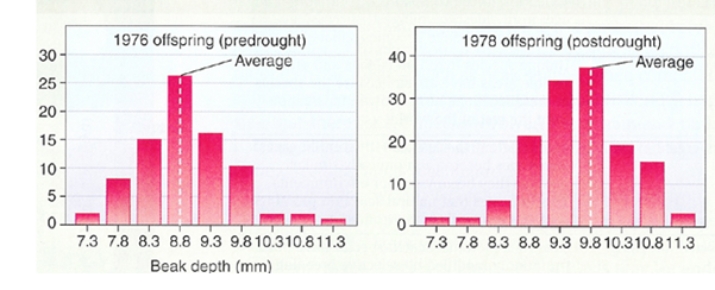Peter and Rosemary Grant study natural selection in finches on the Galápagos Islands.They have hypothesized that dry conditions produce larger seeds and may result in larger beaks in succeeding generations of finches.The figure below shows their data from 1976 and 1978.The y-axis is the number of birds measured and the x-axis is the beak depth.Do their data support their hypothesis and why? 
A) Yes;because there were more birds measured in 1978 after the drought,therefore they must have been able to get food and reproduce.
B) Yes;because the average beak depth of birds in the population increased from 8.8mm in 1976 to 9.8mm in 1978.
C) No;because even though more birds were measured in 1978,the beak size of the upper range was smaller.
D) No;because in 1976,before the drought,the largest beak depth was still 11.3mm.
E) No;more data would be necessary to show a support of their hypothesis.
Correct Answer:
Verified
Q1: What is true of a fossil that
Q3: According to Thomas Malthus,food supplies tend to
Q4: What field of study uses geographic distribution
Q5: The process of natural selection results in:
Select
Q6: The term evolution is used to describe
A)heritable
Q7: A coral species that currently inhabits a
Q8: The interlocking rib cage of Titaalik roseae
Q9: During the Beagle journey,Darwin visited islands,allowing him
Q10: After his journey on the HMS Beagle,Charles
Q11: Some major changes that occurred in horse
Unlock this Answer For Free Now!
View this answer and more for free by performing one of the following actions

Scan the QR code to install the App and get 2 free unlocks

Unlock quizzes for free by uploading documents